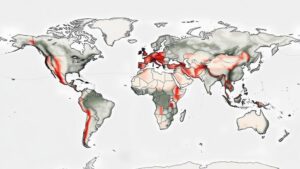Using Genealogical Records to Trace Clues to Buried Wealth and Artifacts
Using Genealogical Records to Trace Clues to Buried Wealth and Artifacts
The exploration of buried wealth and artifacts has long captivated historians, archaeologists, and treasure seekers alike. Genealogical records, which document family histories and lineages, can serve as valuable tools in this quest. By analyzing these records, researchers can uncover clues about the lives of individuals who may have hidden valuables or artifacts, as well as provide context for historical events that may have influenced such actions.
The Role of Genealogical Records in Historical Research
Genealogical records encompass a variety of documents, including birth, marriage, death certificates, census records, and wills. e documents provide insights into family structures, economic status, social connections, and migration patterns. For example, the United States Census Bureaus data can help trace familial ties and property ownership across generations.
A notable example is the 1930 U.S. Census, which listed individuals employment status and property ownership. Researchers can cross-reference this information with land grants and property deeds to identify individuals who may have amassed wealth that could be buried.
Historical Context of Buried Wealth
The concept of buried wealth is often linked to periods of instability, such as wars, financial crises, and societal upheaval. For example, during the American Civil War (1861-1865), many individuals hid valuables out of fear of confiscation. Records indicate that numerous families in the Confederate states buried their gold and silver to safeguard against Union forces.
Also, similar instances can be found in the aftermath of World War II in Europe, where families buried artifacts and valuables to prevent looting. In many cases, genealogical records can lead to families rediscovering these lost treasures.
Case Studies: Successful Discoveries
Several case studies illustrate the successful use of genealogical records in uncovering buried wealth:
- The Hargrove Family Treasure: In 1995, researchers traced the lineage of the Hargrove family in Virginia, linked to a wealthy plantation owner, who supposedly buried gold coins during the Civil War. After extensive genealogical research and historical analysis, treasure hunters uncovered a hidden cache of over 500 gold coins, valued at nearly $1 million.
- The Gray Family Relics: In England, genealogists traced records from the 1700s, revealing that a member of the Gray family had been a military officer with connections to valuable artifacts. Archaeological digs informed by these genealogical discoveries led to the recovery of rare military antiques worth thousands.
Challenges and Limitations
While genealogical records provide valuable insights, researchers face challenges. Completeness and accuracy of records can vary. For example, many records from the 19th century burned in fires or were lost in natural disasters. Also, privacy laws complicate access to more recent records, limiting potential discoveries.
Language and interpretation can pose further hurdles. Historical documents may be written in archaic languages or shorthand, requiring expert analysis for proper interpretation.
Methodological Approaches
To effectively use genealogical records in the search for buried artifacts, researchers employ various methodological approaches:
- Cross-Referencing Records: Researchers should cross-reference genealogical data with historical documents, land records, and local histories to build a comprehensive picture of the subjects life.
- Geospatial Analysis: Utilizing Geographic Information Systems (GIS) technology helps map historical properties and potential treasure locations based on genealogical insights.
- Oral Histories: Engaging with community members can uncover anecdotal information that may not be documented, leading to potential archaeological sites.
Real-World Applications
Genealogical research paired with historical inquiry has profound implications beyond mere treasure hunting. It plays a crucial role in cultural heritage preservation and historical understanding. For example, local historians and museums often use genealogical findings to contextualize collections or exhibitions related to specific families or regions.
Also, the revival of these techniques has led to greater interest in local history and archaeology, as communities work together to identify and preserve their cultural legacies.
Conclusion
Utilizing genealogical records to trace buried wealth and artifacts opens a captivating fusion of history, archaeology, and genealogy. While challenges exist, the potential for discovery remains significant, evidenced by numerous successful case studies. As technology advances and methodologies improve, the interplay between these disciplines will continue to enrich our understanding of history and perhaps unearth lost treasures beneath the surface.
Actionable Takeaways
- For enthusiasts interested in genealogy, begin by compiling family histories using available online databases and local records.
- Practice cross-referencing genealogical data with historical documents to enhance the context of your research.
- Engage with local historical societies or museums to share findings and collaborate on potential archaeological projects.


